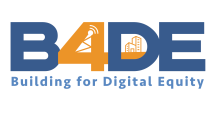Dave Sevick and Computer Reach Go In the Home - Building for Digital Equity Podcast Episode 15

Dave Sevick, Executive Director at Computer Reach in Pittsburgh, has taken his experience helping people with devices and supercharged it for digital equity work. Computer Reach refurbishes computers and sends digital navigators into the home in both urban and rural areas, which is an interesting challenge that many have not attempted. We talk about how they are funded and why they often use Linux-powered devices, among many other topics.
This show is 18 minutes long and can be played on this page or using the podcast app of your choice with this feed.
Transcript below.
We want your feedback and suggestions for the show-please e-mail us or leave a comment below.
Listen to other episodes here or see other podcasts from the Institute for Local Self-Reliance here.
Thanks to Joseph McDade for the music. The song is On the Verge and is used per his Free-Use terms.










